19 Minutes
Why EV depreciation matters: the cost few buyers see coming
Depreciation is the largest single contributor to a vehicle's total cost of ownership, even though it's often invisible until owners try to sell or trade in their car. Electric vehicles (EVs) are, on average, depreciating faster than internal combustion and hybrid vehicles. A recent iSeeCars analysis finds the average car in the U.S. loses about 45.6% of its value over five years — but battery-electric vehicles average a roughly 58.8% decline. Hybrids, by comparison, retain value better (about 40.7% depreciation after five years).
For buyers and fleet managers this matters: a premium paid for a new EV can evaporate more quickly than expected, changing the total-cost calculus for ownership, leases and resale planning. Below we analyze the 10 EVs that iSeeCars identified as losing the most value after five years, explain the technical and market reasons behind steep depreciation, and offer practical guidance for prospective buyers.
Market context: incentives, demand cycles and used‑market spillover
EV adoption is shaped by incentives, charging infrastructure, model availability and consumer sentiment. In recent years, demand has had waves — incentive windows, supply chain disruptions, new model launches and public controversies have all influenced buyer behavior. When large volumes of EVs enter the used market (for example, because owners sell early to avoid controversy or to chase incentives), prices across the segment can soften.
Other factors accelerating depreciation: rapid tech turnover (newer battery chemistries, faster charging standards, and improved range make older models feel outdated), luxury positioning (luxury EVs often depreciate faster than mainstream models), and battery concerns (perceived or real). For many buyers, hybrid models have become an attractive middle ground because they combine lower depreciation with familiar ownership patterns and long-range convenience.
How we read the numbers
Each model below lists the five‑year depreciation percentage and the average five‑year resale price based on the iSeeCars data referenced in the source material. For every vehicle we discuss specifications, design, performance, market positioning and comparisons that help explain why resale values are weak.
1. Audi Q8 e-tron — 5-year depreciation: 72.9% — Average 5-year price: $20,171
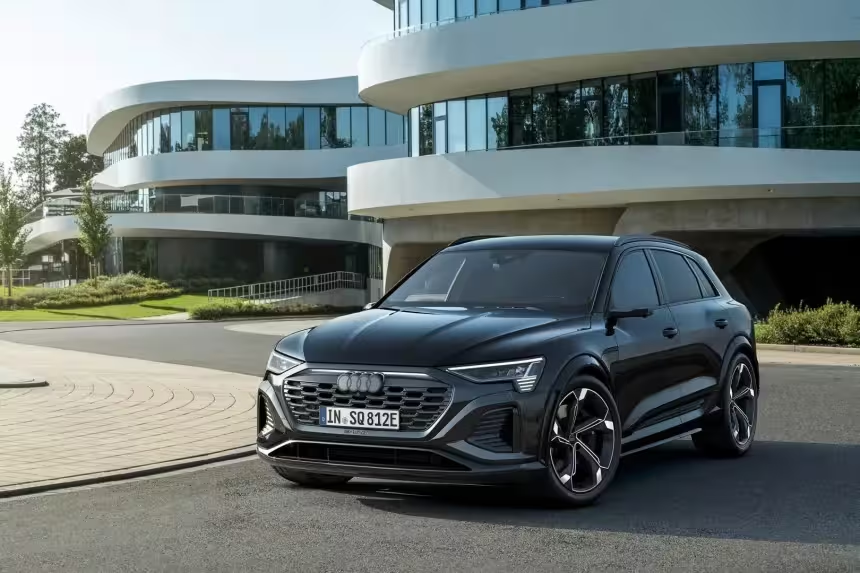
Specifications
The Audi e-tron, later marketed as the Q8 e-tron, was one of the first mainstream luxury BEVs from a legacy European brand. Early powertrain options ranged across single‑ and dual‑motor configurations, with battery capacities offering competitive range for the class at launch. The model was built on a platform derived from Audi's internal e-tron roadmap prior to the arrival of newer dedicated EV platforms.
Design and interior
Audi's e-tron family followed the brand's conservative, premium design language with a high-quality interior, logical control layout and a tech-forward cockpit. The Q8 e-tron facelift kept Audi’s sleek lighting signatures and premium materials, but lacked the radical styling or packaging advantages of newer rivals.
Performance and range
Performance was competent for its class — smooth acceleration, all‑wheel drive variants and typical Audi ride tuning. Real-world range and charging speed lagged behind later 800‑volt systems, affecting owner perception as faster-charging competitors arrived.
Market positioning and resale drivers
As an early luxury entrant, the Q8 e-tron initially attracted attention but faced headwinds: supply chain disruptions during the pandemic, rising competition from newer models (including Audi’s own Q6 e‑tron), and the rapid pace of EV tech improvements. Production was eventually wound down, and a model out of production tends to see a weaker used-market profile. That combination produced the highest five‑year depreciation in the ranking.
Comparison and buyer takeaways
Compared with newer luxury BEVs on dedicated EV platforms, the Q8 e‑tron shows its age. Buyers seeking long-term value should compare battery warranties, available service history and charging performance. For many, the Q8 e‑tron makes sense only at a sharply reduced used price — a factor reflected in the $20,171 average five‑year resale price.
2. Cadillac Lyriq — 5-year depreciation: 71.9% — Average 5-year price: $16,455
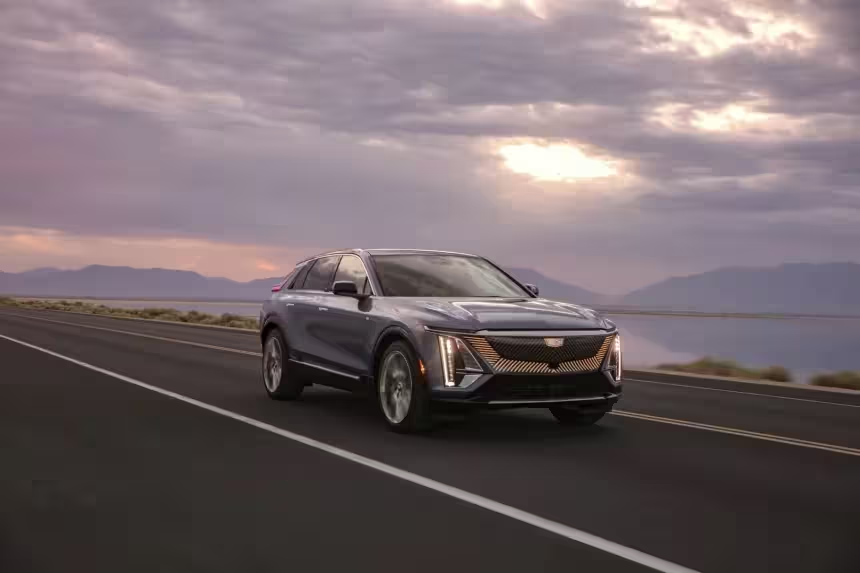
Specifications
The Lyriq is GM’s first large‑scale vehicle built on the BEV3 (Ultium) architecture. Entry spec Lyriq models offered over 300 miles of range and a rear‑drive configuration with approximately 340 horsepower; higher‑spec variants (Lyriq‑V) push output much higher, into the 600‑plus hp territory.
Design and interior
Cadillac styled the Lyriq as a modern, minimal luxury crossover with a striking light bar and a tech‑heavy interior dominated by a wide infotainment screen. Materials were competitive for the price, but market expectations for long‑term software support and perceived luxury value play into resale dynamics.
Performance and range
Range and performance are competitive on paper, but buyers often price EVs not just by peak numbers but by available dealer support, perceived brand stability and the rate at which software keeps the vehicle current.
Market positioning and resale drivers
The Lyriq shares two important liabilities that contribute to rapid depreciation: 1) it’s Cadillac’s first mass-market BEV — early examples often face buyer skepticism; and 2) it sits in the luxury segment, where steep initial prices amplify absolute dollar depreciation. The combined effect pushes the Lyriq’s five-year retained value down to an average of $16,455.
Comparison and buyer takeaways
If you want an Ultium‑based EV with stronger resale prospects, compare how other GM EVs retain value, and prioritize battery warranty terms, software update cadence and resale demand in your region.
3. Rivian R1S — 5-year depreciation: 70.5% — Average 5-year price: $22,409
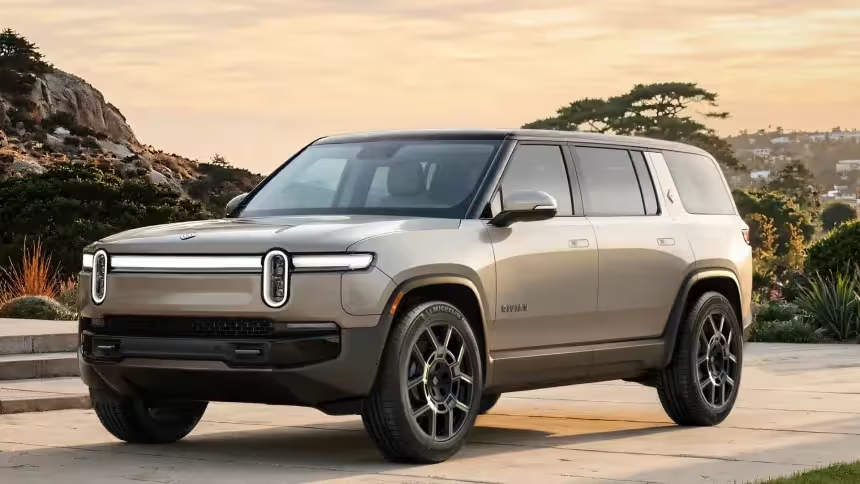
Specifications
The R1S is Rivian’s mid‑size electric SUV built on the brand’s bespoke skateboard architecture. Early models used off‑the‑shelf motors; later refreshes introduced Rivian’s Enduro drive units for improved efficiency and capability.
Design and interior
Rivian’s design emphasizes ruggedness and utility — a trucklike stature with premium finishes inside. Practical storage, modular accessories and adventurous positioning appeal to an outdoors‑oriented buyer profile.
Performance and range
The R1S offers strong off‑road capability, good acceleration and respectable EV range in line with large battery SUVs. The new Enduro units improved efficiency, but higher purchase prices and early production complexity weigh on used demand.
Market positioning and resale drivers
As a startup brand, Rivian has had to prove manufacturing consistency, service network depth and long‑term viability — factors that influence used‑car buyers. The R1S’s high initial price and luxury positioning have led to significant absolute depreciation, landing it near the top of the list. Interestingly, the R1T pickup has shown better retention in the same study, suggesting differing market appetite between trucks and SUVs.
Comparison and buyer takeaways
Prospective buyers should verify factory updates (Enduro drive units), service availability and remaining battery warranty. If resale value is a priority, compare the R1S with other luxury electric SUVs and consider a certified pre‑owned purchase.
4. Tesla Model S — 5-year depreciation: 65.1% — Average 5-year price: $27,895
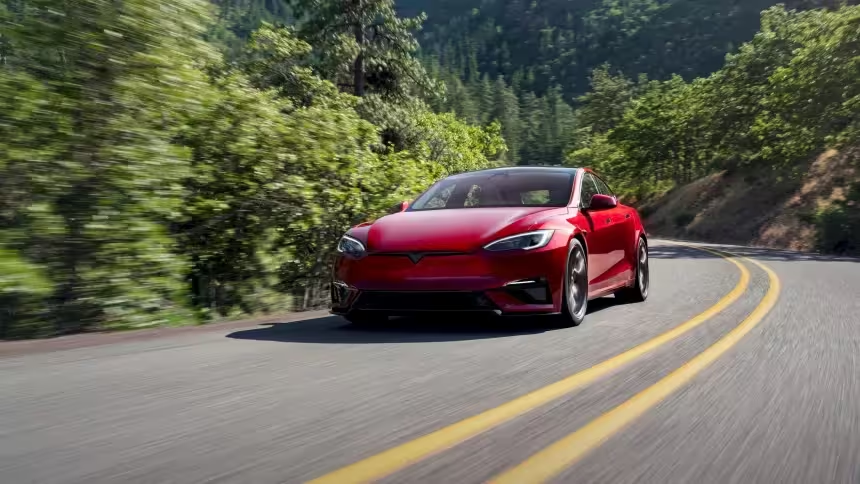
Specifications
The Tesla Model S helped prove that electric cars could outperform ICE rivals. Over its life, it offered high range variants, Ludicrous/Plaid performance options and industry‑leading energy efficiency at times.
Design and interior
Interior updates have been incremental: a minimalist cabin, a large touchscreen center stack and an emphasis on software features rather than material luxury compared with European rivals.
Performance and range
Performance levels remain strong, especially in high‑end Plaid trims. However, rising competition with similar or better real‑world efficiency, new battery tech and improved ride quality from rivals have narrowed Tesla’s advantage.
Market positioning and resale drivers
Tesla’s early first‑mover advantage helped Model S prices hold for years, but more aggressive competition, incremental updates and brand sentiment swings have softened its position. The Model S still retains some used value due to its pedigree and performance, but owners should expect a sizeable drop versus the original purchase price.
Comparison and buyer takeaways
If performance and tech are your priorities, the Model S remains compelling. For buyers focused on long‑term monetary retention, consider lower‑trim variants, factory warranty coverage transferability, and local demand in the pre‑owned market.
5. Ford Mustang Mach‑E — 5-year depreciation: 65.0% — Average 5-year price: $13,312
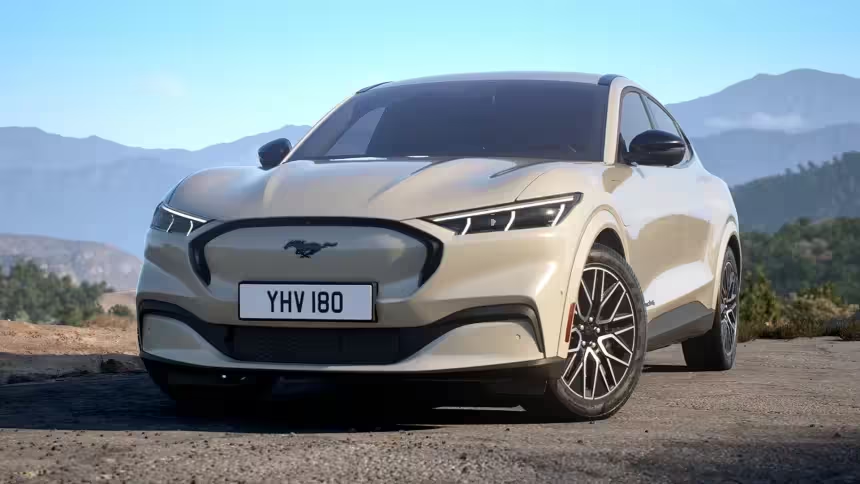
Specifications
Built on a shared Ford platform, the Mustang Mach‑E places electric powertrains into a crossover body. Power and range vary by trim, with options ranging from single‑motor rear‑drive models to dual‑motor performance versions.
Design and interior
The Mach‑E blends Mustang styling cues with crossover practicality. Interior quality and infotainment are competitive, and the nameplate association boosted early interest.
Performance and range
Handling is better than many crossovers, and higher trims provide strong acceleration. However, the platform and components are evolving, and the Mach‑E's value retention is hampered by rapid generational improvements.
Market positioning and resale drivers
While the Mustang badge helped the Mach‑E stand out, its rapid depreciation reflects aging tech, competition from more modern EVs, and uneven EV demand cycles. A 2025 refresh added features like a heat pump and 'superstalk' wiper integration, but early buyers still saw meaningful value drop.
Comparison and buyer takeaways
If you want an affordable entry to the EV SUV space, the Mach‑E can be compelling used — particularly if you prioritize driving dynamics and want a lower upfront cost. To limit depreciation exposure, consider buying lightly used once tech wrinkles have been ironed out.
6. Nissan Leaf — 5-year depreciation: 64.5% — Average 5-year price: $9,981
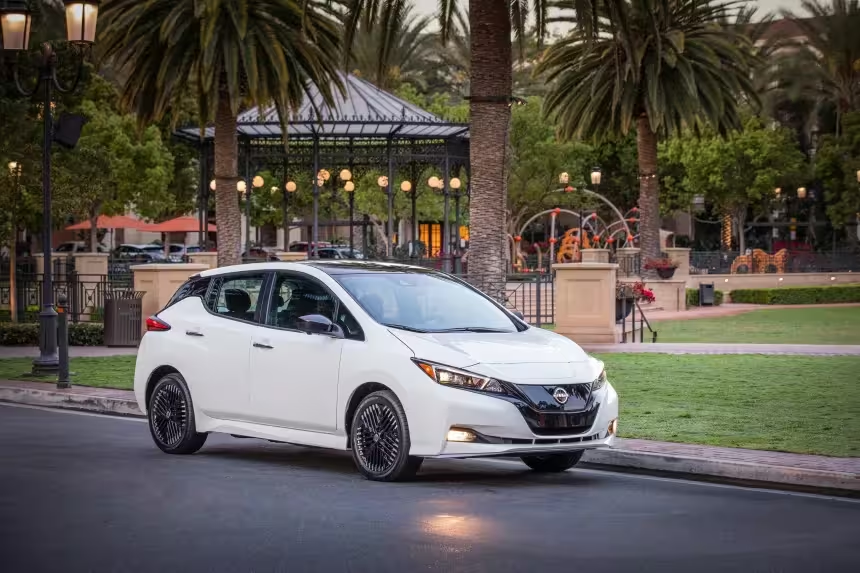
Specifications
The Nissan Leaf was one of the first mass‑market EVs, debuting in 2011. Early versions had limited range and primitive battery thermal management by modern standards, which contributed to early owner worries about longevity.
Design and interior
The Leaf’s design has never been its strongest selling point. The second‑generation model improved packaging and tech, and Nissan plans a crossover‑shaped third iteration to better match market tastes.
Performance and range
Range and performance are modest compared to more recent BEVs. Lower price points helped adoption, but supply and battery concerns dented prestige and perceived long‑term value.
Market positioning and resale drivers
As a pioneer, the Leaf helped normalize EVs — but early technical shortcomings and lower desirability in a segment where range matters explain weak resale. The average five‑year price under $10k reflects low demand for older Leafs with limited range.
Comparison and buyer takeaways
If your priority is a low purchase price and short‑range urban commuting, a used Leaf can be economical. Confirm battery condition, charger compatibility and remaining warranty before buying.
7. Tesla Model X — 5-year depreciation: 63.4% — Average 5-year price: $31,144
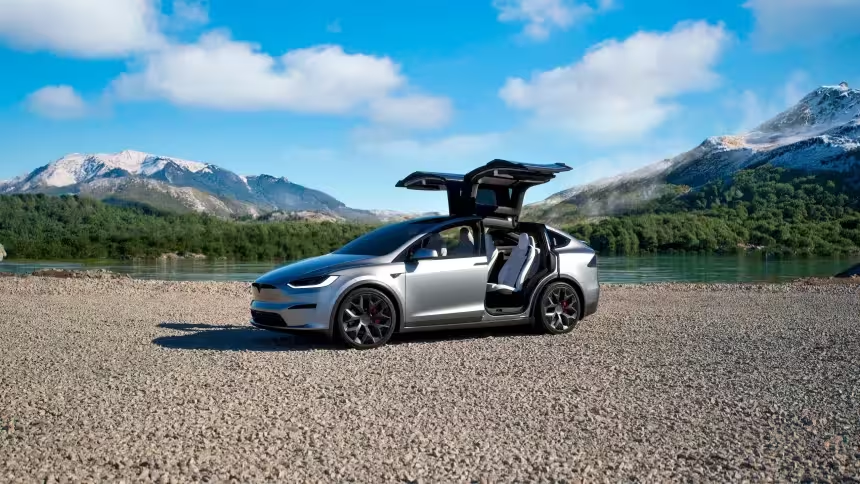
Specifications
The Model X is Tesla’s three‑row luxury SUV known for its Falcon Wing doors and high‑output powertrains. It commanded premium pricing relative to many rivals.
Design and interior
The Model X’s distinctive doors and spacious cabin set it apart, but manufacturing complexity and high pricing reduced broad consumer appeal as newer, more affordable alternatives emerged.
Performance and range
Performance remains a key selling point for the Model X, but buyers increasingly question the value proposition of $100k+ EVs when competitors offer modern tech and range at lower price points.
Market positioning and resale drivers
Model X depreciation reflects a high starting price, production complexity, slower feature refreshes compared with newer Tesla projects, and changing customer preferences toward more affordable crossovers. Still, its average five‑year resale value remains above many other EVs due to its size and relative rarity on the used market.
Comparison and buyer takeaways
If you value unique features and performance, the Model X can be a solid used buy. Check vehicle software history, door mechanism condition and battery health for long‑term value.
8. Kia EV6 — 5-year depreciation: 61.5% — Average 5-year price: $16,500
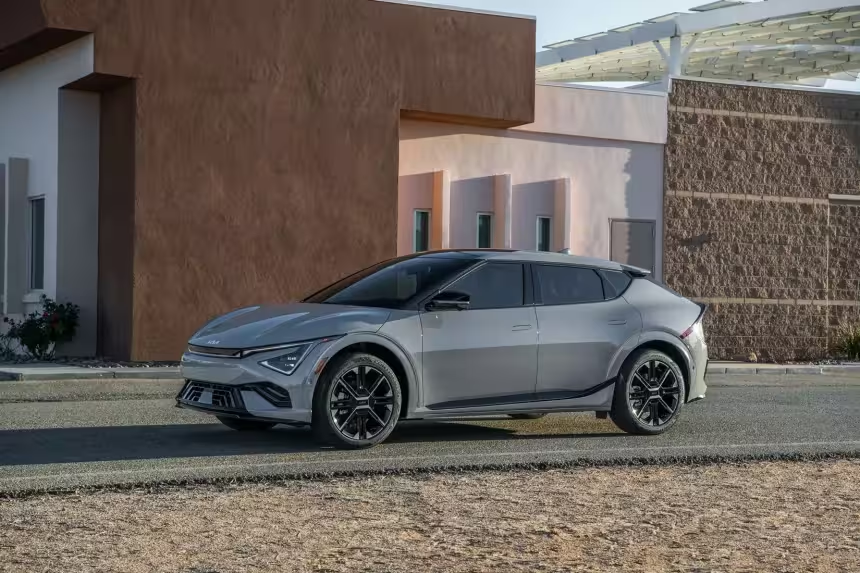
Specifications
The EV6 sits on Hyundai‑Kia’s E‑GMP platform and benefits from 800‑volt architecture in some configurations, which enables faster charging and better thermal performance compared with older 400‑volt systems.
Design and interior
The EV6’s dramatic fastback styling and modern interior have attracted attention. It mixes hatchback practicality with crossover cues and a tech‑rich cabin.
Performance and range
The EV6 delivers fast charging capability and competitive range. Still, its styling and market position make it slightly less mainstream than its Hyundai Ioniq 5 cousin, which has translated to different resale trajectories.
Market positioning and resale drivers
Despite strong hardware, the EV6 trades off popularity against the Ioniq 5 in some markets, producing marginally worse five‑year retention. Nevertheless, the EV6 remains a strong value proposition on the used market for buyers seeking fast charging and competitive driving dynamics.
Comparison and buyer takeaways
If charging speed and driving feel matter, the EV6 is a good candidate. Compare trim levels and fast‑charger compatibility when calculating long‑term ownership costs.
9. Tesla Model Y — 5-year depreciation: 60.8% — Average 5-year price: $23,491
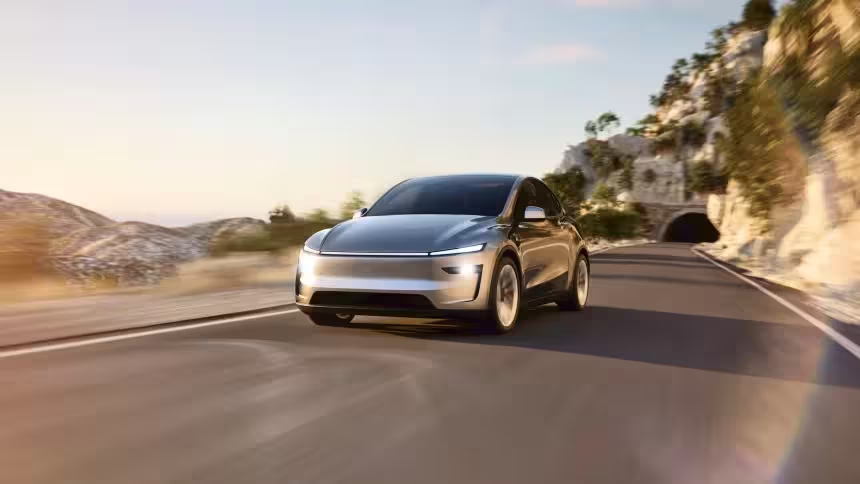
Specifications
Launched in 2020, the Model Y is a compact/mid‑size crossover derived from the Model 3 platform. It became a global sales powerhouse and ranked as the world’s best‑selling passenger vehicle in 2023 and 2024.
Design and interior
The Model Y maintains Tesla’s minimalist interior and emphasis on software features. Recent 2026 updates refined aerodynamics, suspension and cabin comfort.
Performance and range
With updates focused on ride quality and efficiency, the Model Y continues to offer competitive range and acceptable performance in most trims.
Market positioning and resale drivers
The Model Y’s broad market reach gives it stronger used demand than many luxury EVs, which helps its relative retention. Still, the sheer volume of both new and used Model Ys in the market moderates resale values. Projections suggest the Model Y may age better than some competitors at seven years before normalizing at longer horizons.
Comparison and buyer takeaways
For everyday practicality, a used Model Y can be a smart purchase — especially if you factor in Tesla’s Supercharger network access and strong software support. Check for recent hardware updates and local supply/demand dynamics.
10. Tesla Cybertruck — 5-year depreciation: 60.0% — Average 5-year price: $31,988

Specifications
The Cybertruck uses an unusual stainless steel body and a rigid exoskeleton structure. Its architecture introduced several novel ideas: unique electrical architecture, plans for steer‑by‑wire and a focus on utility and durability.
Design and interior
The Cybertruck’s radical design polarized buyers and the public, which both helped brand awareness and complicated mainstream acceptance. The interior is utilitarian with an emphasis on cargo and payload capability.
Performance and range
Performance figures were competitive on paper for a utility truck, and Tesla touted strong towing and payload metrics. Real‑world acceptance and fleet integration remain ongoing.
Market positioning and resale drivers
Polarizing design and the public debate around the vehicle contributed to volatile demand. While it introduced cutting‑edge materials and manufacturing approaches, social factors and owner decisions influenced resale. With an average five‑year resale near $32k, the Cybertruck’s depreciation is significant despite its high initial price.
Comparison and buyer takeaways
If you prize durability and want a distinct vehicle with tech potential, the Cybertruck could be appealing used — but be mindful that polarizing styling, aftermarket acceptance and repair considerations may affect resale and insurance rates.
Common themes behind rapid EV depreciation
- Rapid technological progress: Newer battery chemistries, charging speeds and range improvements make older EVs feel dated faster than ICE cars.
- Brand and market sentiment: Public controversies, shifting brand reputations and perceived manufacturer stability influence buyer confidence for used purchases.
- Luxury vs volume segmentation: Luxury EVs with high sticker prices often suffer larger absolute dollar losses and sometimes larger percentage declines when demand is weak.
- Incentive and policy timing: When the timing of tax credits or incentives changes, demand can spike or drop, causing used‑market distortions.
- Battery perception: Even with strong warranties, concerns about long‑term battery health can push down used values.
How to limit depreciation risk when buying an EV
1) Prioritize warranties and battery coverage
A transferable battery warranty (or remaining factory coverage) is one of the most important protections for used EV buyers.
2) Check total cost of ownership, not just MSRP
Consider charging costs, potential home charger installation, insurance, maintenance and projected resale value when comparing EVs to hybrids or ICE vehicles.
3) Buy later in the model lifecycle
Buying a used example after first‑year issues are resolved, or after a mid‑cycle refresh, can reduce depreciation risk.
4) Evaluate local demand and charger infrastructure
Used‑car values vary by region. Strong local demand for certain models can help preserve value. Access to DC fast charging and service centers matters too.
5) Consider hybrids if long‑term resale is a priority
Hybrid models in recent analysis retained value better than BEVs. They can be a practical alternative if you want lower depreciation while accessing electrified driving.
Final thoughts: balancing technology, lifestyle and value
Electric vehicle ownership offers clear benefits in fuel savings, instant torque and often a quieter, more modern driving experience. But the pace of change in the EV market means buyers must be deliberate: match the vehicle to your expected ownership horizon, check warranty coverage, and understand how local market dynamics influence resale price.
The vehicles above earned their spots on the list largely because of a mix of luxury positioning, rapid tech turnover, brand and production challenges, and in some cases polarizing public perception. That doesn’t make all of them bad buys — many are excellent vehicles for owners who plan to keep them long term, value specific features, or can buy used at a discount. But if you’re buying with resale value in mind, treat these models with extra care: research local demand, compare segment alternatives, and get complete documentation on battery and software support before you sign.
Quick buyer checklist
- Verify the remaining battery and vehicle warranty and whether it is transferable.
- Review battery health, charging history and any past crash or repair records.
- Compare five‑year total cost of ownership including expected depreciation, insurance and charging costs.
- Consider certified pre‑owned programs and manufacturer refurbishments.
- Factor in ease of maintenance and access to dealer/service network for the specific model.
Whether you’re shopping for your first EV or managing a fleet, understanding depreciation patterns will save you money and avoid surprises at resale time. Use the rankings above as a starting point for deeper research rather than the only factor in your decision.
Source: autoevolution

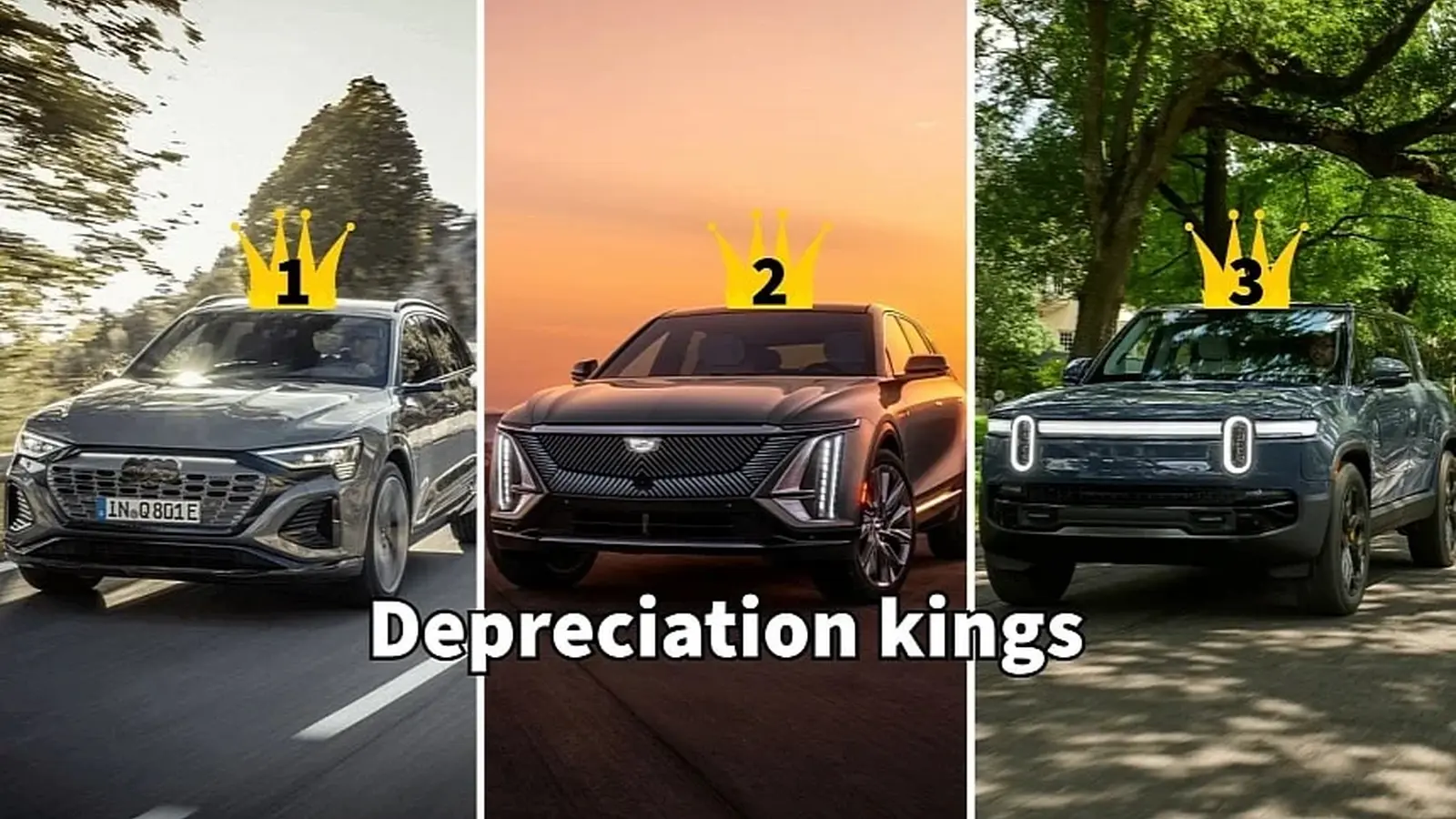
Leave a Comment